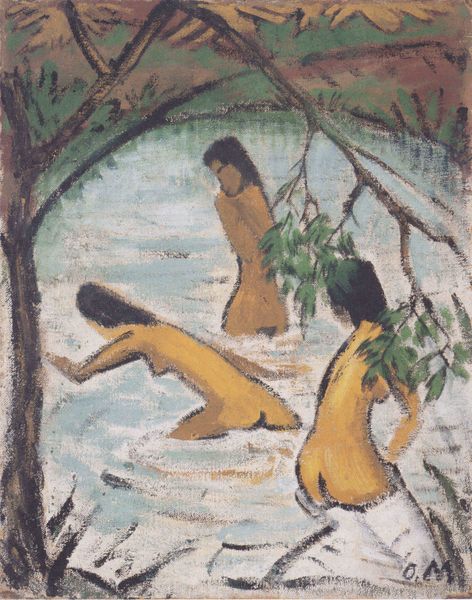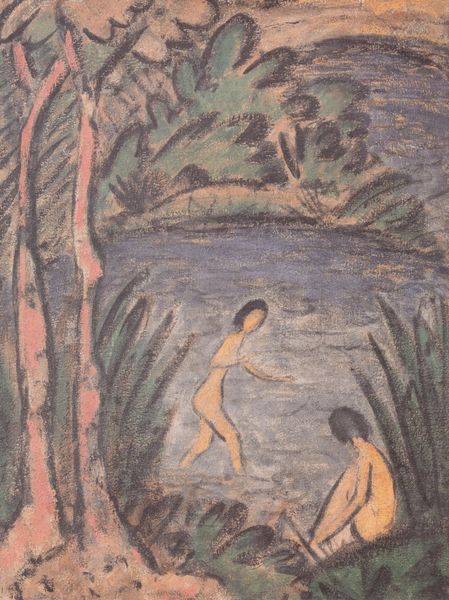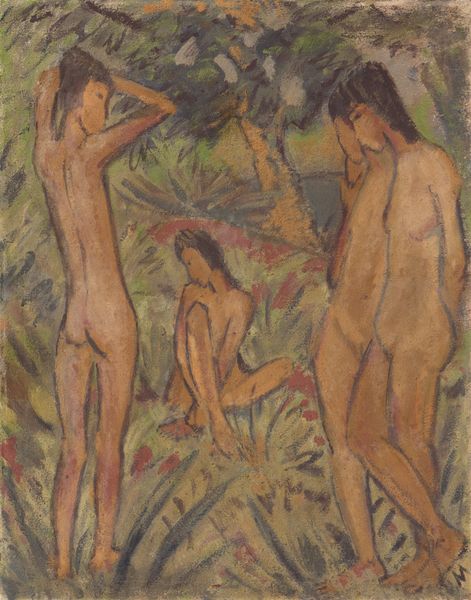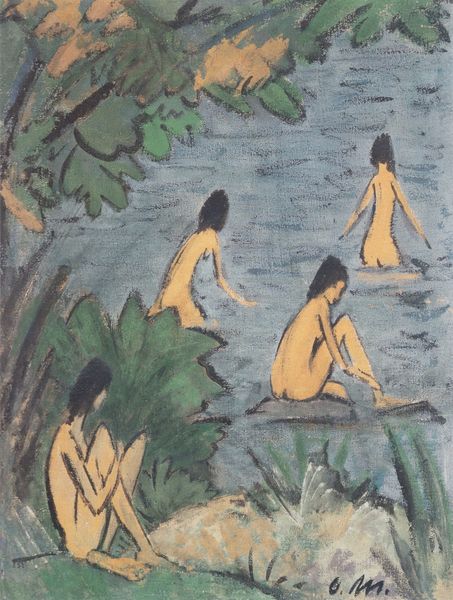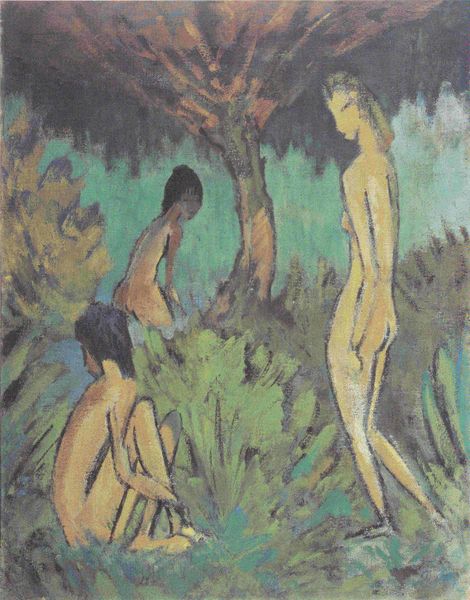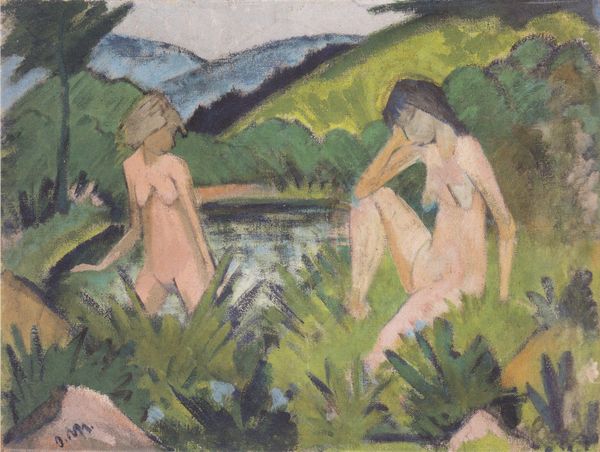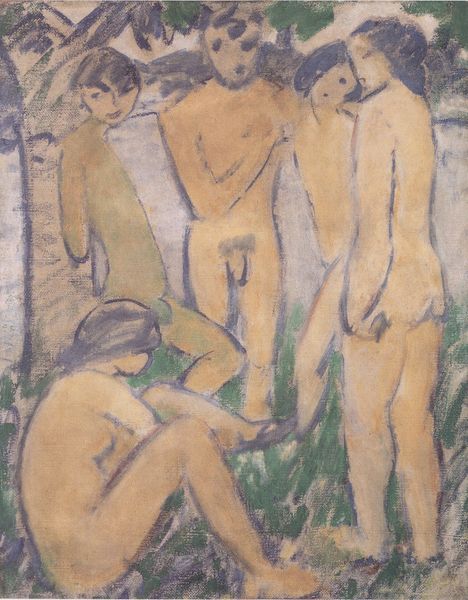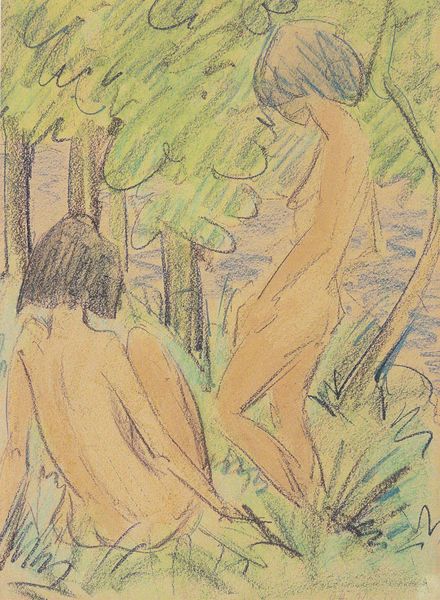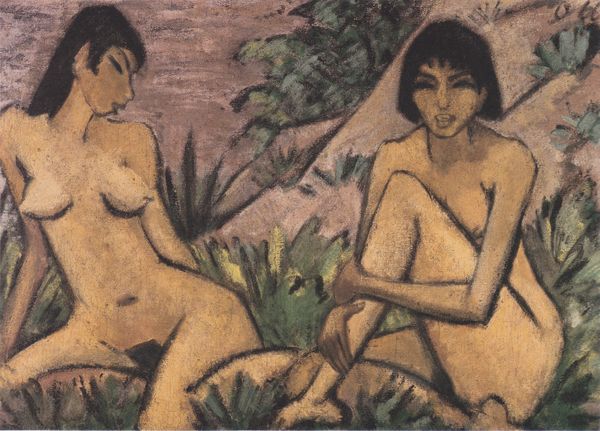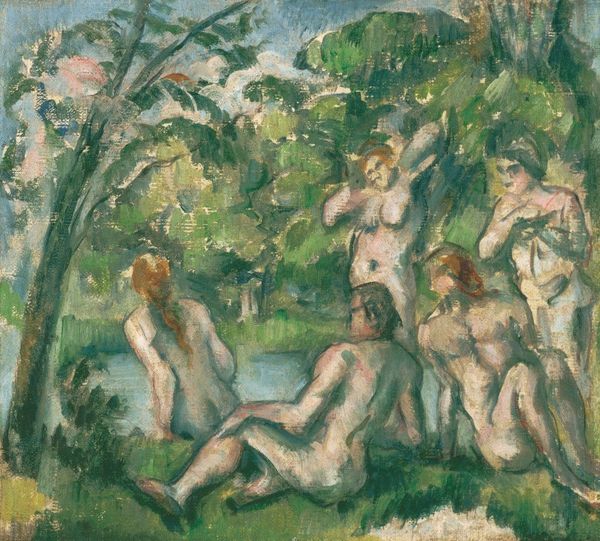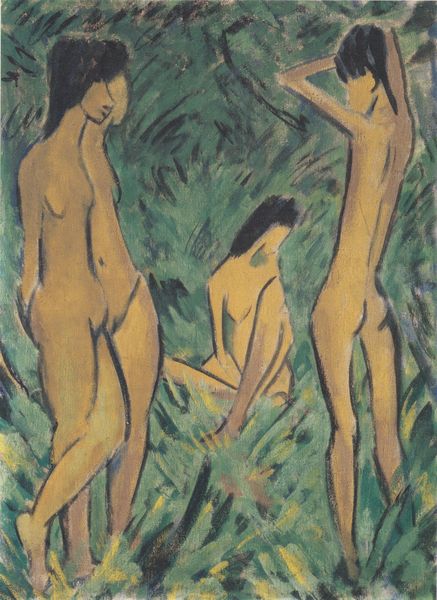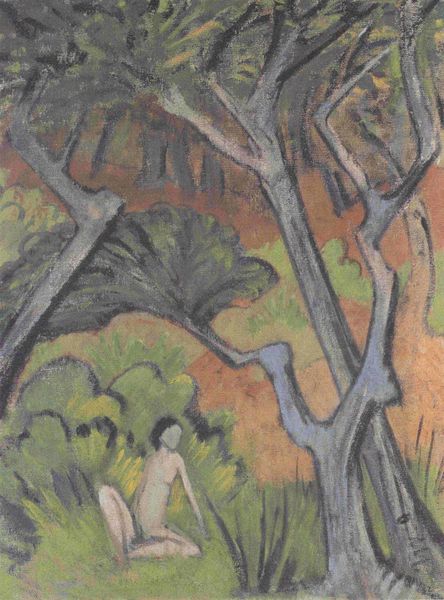
Fünf Badende in Seenlandschaft 1918
0:00
0:00
ottomueller
Staatliche Galerie Moritzburg, Moritzburg, Germany
watercolor
#
water colours
#
landscape
#
figuration
#
oil painting
#
watercolor
#
group-portraits
#
expressionism
#
nude
#
watercolor
Dimensions: 85 x 110 cm
Copyright: Public domain
Curator: Welcome. Here we have Otto Mueller’s watercolor painting "Fünf Badende in Seenlandschaft," or "Five Bathers in a Lake Landscape," created in 1918. Editor: There's a definite sense of somberness to it, isn’t there? The muted color palette feels both dreamy and slightly melancholic. Curator: Indeed. Note how the artist uses layered washes of watercolor to create a textured, almost grainy effect. It softens the contours of the figures, integrating them into the environment, evoking an interesting primitivism that belies the sophisticated glazing happening on the painting surface. Editor: It’s the labor that is truly engaging, I think. Watercolor, often dismissed, carries the touch of Mueller so intimately—a quiet intimacy we see in these communal bathing scenes. Did Mueller, do we know, prepare his own pigments here, how locally sourced were the elements that build this art? Curator: It is not definitively clear if he milled his own paints in this work, though it remains the possibility and indeed is one favored by conservators given the paint structure. What I do observe are these strategic omissions, how certain areas remain untouched. These untouched spots amplify the painting's raw, elemental quality. There are deliberate spatial tensions here between figure and ground. Editor: Right, how these omissions leave space for reinterpretation, allow us, the viewer to enter and almost collaborate. There’s also this suggestion of idyllic escape… however these moments, or perhaps even the raw materials for the image itself are inextricably bound by and born out of toil. How does the location where the image resides speak to you as a reflection of the painting? Curator: Interestingly, the painting resides at Staatliche Galerie Moritzburg, and given that this artwork emerged at the tail end of the First World War and the gallery sits adjacent a physical site of war speaks to an emotional desire for an enduring sanctuary that is, however, physically unlocatable within Germany, beyond simply this image of longing. Editor: Thank you. I now see, and understand. Curator: And for me, I’m ever more captivated by how the artistic choices made manifest by material outcomes create complex emotional and intellectual responses, even today.
Comments
No comments
Be the first to comment and join the conversation on the ultimate creative platform.
